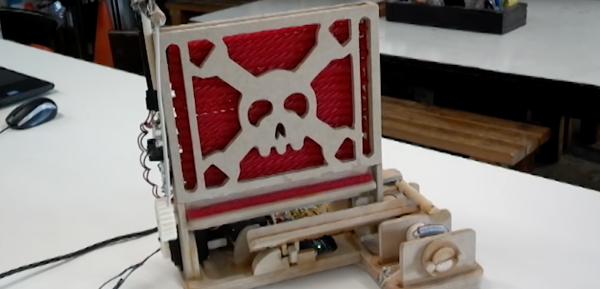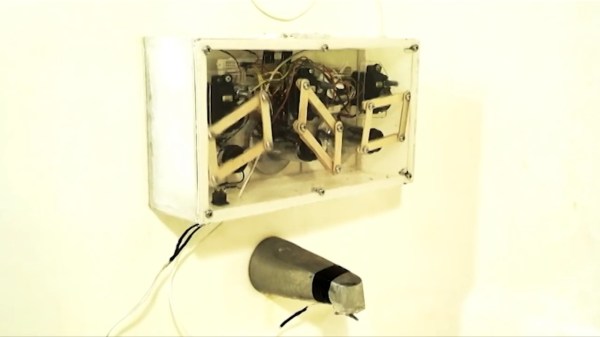[Vije Miller]’s Arduino Licorice Launcher is based on the simple and logical premise that one must always have a voice-activated Red Vines catapult in the workshop. When he calls out to the robot, it turns to aim at him and flings a piece of licorice at his head.
The chassis is CNCed out of quarter-inch MDF and the spring-loaded catapult arm is managed by two servos, one to tension the arm and one to secure it until it’s triggered. Third and fourth servos aim the catapult and dispense another piece of licorice from the magazine. His robot adapts a radio homing technique [Vije] learned about from RoboWarner, which allows a robot to track a moving RF signal.
[Vije]’s first prototype uses an Arduino Uno connected to a serial port on a PC, but he hopes to acquire an MKR1000 WiFi module, which combines a Arduino Zero with WiFi. Already, this Red Vines launcher is a complete success; the marketing team at Red Vines sent him a huge pile of swag and free licorice for his efforts. You can check out [Vije]’s promo video of the project below.
Continue reading “Hackaday Prize Entry: Room-Tracking Red Vines Flinger”




 [VijeMiller] has aluminum extrusion tastes on a cardboard budget, but don’t let that put you off this clever build. The idea is pretty simple: a two-axis plotter that moves a rotary-action business end to any point within a V-shaped work envelope. The Arduino in the base talks to a smartphone app that lets you point to exactly the spot in need of attention on what for most of us would be an incredibly optimistic photorealistic map of the dorsal aspect of the body (mildly NSFW photo in the link above dips below the posterior border). Point, click, sweet relief.
[VijeMiller] has aluminum extrusion tastes on a cardboard budget, but don’t let that put you off this clever build. The idea is pretty simple: a two-axis plotter that moves a rotary-action business end to any point within a V-shaped work envelope. The Arduino in the base talks to a smartphone app that lets you point to exactly the spot in need of attention on what for most of us would be an incredibly optimistic photorealistic map of the dorsal aspect of the body (mildly NSFW photo in the link above dips below the posterior border). Point, click, sweet relief.











